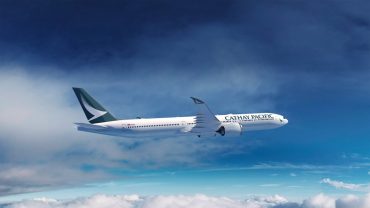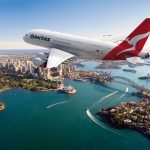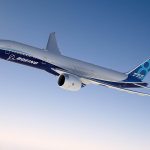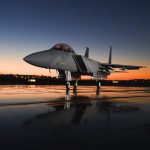
- Aerospace
- Airline Stocks
- Mobility Tech
Cathay Pacific Orders 14 Boeing 777-9 Jets in $8.1 Billion Deal
5 minute read

Hong Kong’s largest airline expands global reach with fuel-efficient Boeing jets amid strong post-pandemic recovery
Key Takeaways
- Cathay Pacific orders 14 additional Boeing 777-9 aircraft worth $8.1 billion at list prices, bringing total commitments to 35 aircraft and marking its first Boeing purchase in nearly 12 years.
- First-half profit rises to HK$3.65 billion ($460 million) as the Hong Kong carrier benefits from surging travel demand across Asia and reduced fuel costs.
- Fleet modernization targets 2027-2034 delivery timeline as Cathay expands to over 100 destinations globally while replacing aging 777-300ER aircraft with more fuel-efficient models.
Introduction
Cathay Pacific Airways makes its largest aircraft investment in over a decade, ordering 14 additional Boeing 777-9 jets as the Hong Kong carrier capitalizes on Asia’s travel recovery. The $8.1 billion deal brings Cathay’s total 777-9 commitments to 35 aircraft, positioning it as the largest operator of the type in the Asia-Pacific region.
The aircraft purchase coincides with robust first-half earnings that demonstrate the airline’s recovery momentum. Cathay reported an attributable profit of HK$3.65 billion ($460 million) for the first six months of 2025, driven by strengthening passenger demand across China and regional markets.
Key Developments
Cathay exercised purchase rights for the additional 777-9 aircraft after nearly 12 years without ordering from Boeing. The deal includes options for seven more aircraft, with deliveries scheduled between 2027 and 2034.
Revenue increased to HK$54.31 billion from HK$49.60 billion year-over-year, primarily driven by passenger revenues. Operating costs rose 10.7% to HK$48.4 billion, outpacing the 9.5% revenue growth and resulting in operating profit declining 1.5% to HK$5.9 billion.
The airline expanded its network aggressively, launching 19 new destinations in 2025 and reaching over 100 passenger destinations globally. Cathay’s passenger volumes surged 36.1% year-over-year in May alone.

Market Impact
Cathay Pacific’s stock has surged 50% over the past year as investors respond positively to the airline’s recovery trajectory. The company declared an interim dividend of HK20 cents per share, signaling confidence in its financial position.
The Boeing order provides a significant boost to the 777X program, which recently resumed test flights after technical delays. The deal strengthens Boeing’s position in the Asia-Pacific market amid recovering aviation demand.
Cathay earned recognition as one of the world’s top three airlines by Skytrax in 2025, reinforcing its premium positioning in competitive Asian markets.
Strategic Insights
The 777-9 aircraft offer 20% lower fuel consumption and emissions compared to older models, aligning with industry sustainability trends. The jets’ 7,295 nautical mile range enables new direct routes and supports Cathay’s long-haul expansion strategy.
Fleet modernization addresses operational efficiency as the new aircraft replace aging 777-300ER models. Cathay currently operates 35 of the older variant and expects the transition to reduce operating costs significantly.
The timing coincides with improving U.S.-China trade relations, as both nations agreed to lower tariffs earlier this year. This development reduces previous concerns about Chinese restrictions on U.S. aircraft purchases.

Expert Opinions and Data
Chair Patrick Healy emphasizes the company’s resilient foundation, stating: “I am pleased with our solid financial performance and other achievements in the first half of 2025, especially within the context of what has been an uncertain business environment.”
Boeing’s senior vice president Brad McMullen highlighted the strategic value, noting the 777-9’s role in supporting Cathay Pacific’s leadership position as a premium carrier.
However, analysts from UBS and Morningstar express caution about sustainability. They cite concerns including profit margins below pre-pandemic levels, debt-to-EBITDA ratio of 1.17x, and weak earnings per share growth forecasts below 2% annually.
Investing.com reports that despite strong revenue growth, analysts worry about yield compression and competitive pricing pressures affecting long-term profitability.
Conclusion
Cathay Pacific’s aircraft order represents a strategic bet on sustained travel recovery and positions the carrier for long-term growth through fleet modernization. The airline demonstrates financial resilience with strong first-half results while expanding its global network beyond 100 destinations.
The company faces the challenge of maintaining growth momentum while managing elevated debt levels and competitive pressures. Success depends on sustaining passenger demand recovery and achieving operational efficiencies from its modernized fleet.








